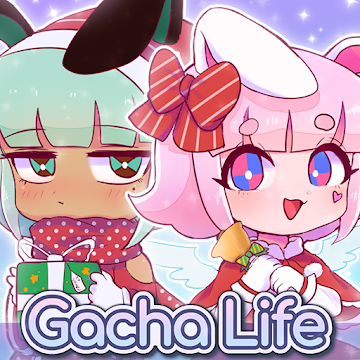
-
Director:
Andrew Davenport and Anne Wood (Creators)
-
Release date:
March 31, 1997
-
Distributed by:
BBC Worldwide
Features Review
As I sit in my cozy living room, I often find myself reminiscing about a peculiar, vibrant show that burst onto the screen during my childhood: Teletubbies. The whimsical nature of this show, filled with bright colors and quirky characters, created a world unlike any other. With my memories flooding back, I realize how impactful this simple television series has been on my perception of innocence and imagination.
Meeting the Teletubbies
The first time I encountered the Teletubbies, I was instantly drawn to their charm. Tinky Winky, Dipsy, Laa-Laa, and Po were the characters that made my heart flutter. Each Teletubby had their own distinct personality that I found fascinating. I remember thinking how they each represented different aspects of friendship and teamwork.
The Role of Tinky Winky
Tinky Winky, the largest of the group, was dressed in purple and carried an iconic red handbag. I initially found his curious exploration of the world intriguing. His gentle spirit seemed to command respect. There was something comforting about his character, like a reassuring presence in a chaotic world.
The Quirkiness of Dipsy
Dipsy, in his green attire, was always up for a fun adventure. I remember watching him with delight as he danced and strutted around Tinky Winky. His eccentric personality inspired me to embrace my individuality, regardless of what others thought. Dipsy's confidence resonated with me as he insisted on wearing his favorite hat at all times, symbolizing the importance of self-expression.
Laa-Laa's Playful Nature
Laa-Laa, with her sunny yellow color and ball, captured my attention with her playful demeanor. I admired her joyful spirit, always eager to play games. It was through her interactions with Dipsy that I learned the values of sharing and teamwork. I often found myself wishing to join them in their adventures across the rolling hills of Teletubbyland.
Po and Her Adventurous Side
Then there was Po, the smallest Teletubby in red, who fascinated me with her fearless attitude. I vividly remember her adventures on her scooter, gleefully racing around the grassy landscape. Po’s determination showed me that even the smallest person can achieve great things, inspiring me to embrace challenges without fear.
The Enchanting Sun Baby
One of the most magical aspects of the show was the Sun Baby, smiling down upon the Teletubbies. I felt a sense of warmth each time she would giggle and shine upon them, showcasing the bond between nature and friendship. Her laughter was infectious, and I found myself smiling along in unison.
The Importance of Innocence
As an adult, it’s easy to overlook the beauty of innocence that Teletubbies encapsulated. The show presented a world where everything was lush and playful, free from the burdens that come with growing up. It taught me to appreciate the small joys in life, much like the Teletubbies enjoyed their simple games and leisure time together.
Lessons in Communication
The distinctive language of the Teletubbies intrigued me as well. Their babbling and laughter illustrated that communication transcends words. I learned that friendship often goes beyond verbal interaction; nonverbal cues and laughter are just as powerful in building relationships. I found myself trying to imitate their sounds, enjoying the playful cadence they used.
The Role of Nature
One of my favorite memories from the show involved the vibrant Teletubbyland, with its picturesque hills, flowers, and playful animals. It urged me to connect with nature, and I often found myself imagining adventures in my back garden, pondering what magical creatures might be hidden there. The world created by Teletubbies celebrated the importance of nature and how it fuels our imagination.
Adventures with the Tubby Custard
No memory of the Teletubbies is complete without a mention of the tubby custard. I reveled in the mischievous moments when the Teletubbies would indulge in this delightful treat. The many splatters and spills often led to humorous scenarios that kept me giggling. I wished I could taste that mysterious custard and share in those joyful messes.
Friendship and Cooperation
The interactions among the Teletubbies represented the essence of friendship and cooperation. There were times they would argue, but they always found ways to reconcile and support one another. Observing their adventures taught me invaluable lessons about working together, celebrating each other's differences, and the importance of forgiveness. The way they resolved their conflicts resonated deeply with my understanding of companionship.
Magic of Repetition
The repetitive nature of the show struck me as clever. Each episode often contained familiar patterns that allowed children to anticipate what would happen next. This not only entertained me as a kid but also made me feel a sense of security. I realized how living through routines, especially those filled with joy and laughter, fosters comfort and reliability.
Cultural Impact and Nostalgia
Reflecting on the phenomenon of Teletubbies, I see how it transcended borders and left an indelible mark on popular culture. The characters became icons whose achievements and quirks inspired countless adaptations and merchandise. Even today, the nostalgia it brings evokes a wave of fond memories for many who grew up in the 90s. The show remains a reminder of simpler times, invoking smiles and warmth.
Art and Music in Teletubbyland
The use of vibrant colors and whimsical music in Teletubbies contributed to its artistic charm. I remember immersing myself in the experience as melodies accompanied the Teletubbies’ adventures, amplifying emotions and enriching the storytelling. I often find myself humming those catchy tunes, almost mesmerized by their simple yet beautiful arrangements.
Tinky Winky’s Iconic Handbag
How can I forget Tinky Winky’s red handbag? It quickly became a symbol of personal expression and exploration for me. I remember many moments where it represented the idea of carrying your treasures, those little things that make life special. Tinky Winky’s gentle way of bringing along his favorite items taught me to embrace my unique interests.
Exploring Emotions
The adventures of the Teletubbies taught me a great deal about emotional expression. Each character openly displayed various feelings, from joy to sadness and everything in between. Their unabashed displays of emotion resonated with me, encouraging me to embrace my feelings fully and authentically. Through laughter and playful moments, I found ways to process my own emotions.
Transforming Perspectives
As I grew older, I realized that my perspective on Teletubbies also transformed. What once seemed like a mere children's show became a profound commentary on human connections, acceptance, and creativity. I appreciate how it shaped my understanding of friendship and collaboration through fantastical stories, allowing me to make sense of the world around me in a fun and imaginative way.
A Lasting Legacy
Fast forward to the present day, children's programming has evolved, yet the legacy of Teletubbies remains alive. The distinctly whimsical universe continues to inspire a new generation of viewers. I often wonder if children today experience the same delight and enchantment I felt while watching the colorful escapades of Tinky Winky, Dipsy, Laa-Laa, and Po.
Pros
- Encourages creativity and imagination through colorful visuals and whimsical storytelling
- Promotes social interaction as characters engage in cooperative play
- Teaches important life lessons about friendship, sharing, and conflict resolution
- Stimulates early language development with repetitive phrases and sounds
- Provides a safe and joyful viewing experience for young children
- Celebrates diversity and individuality through the unique personalities of each character
Cons
- May oversimplify complex emotions and situations for some audiences
- Repetitive format can become monotonous for older children and adults
- Limited educational content compared to other children's programming






















